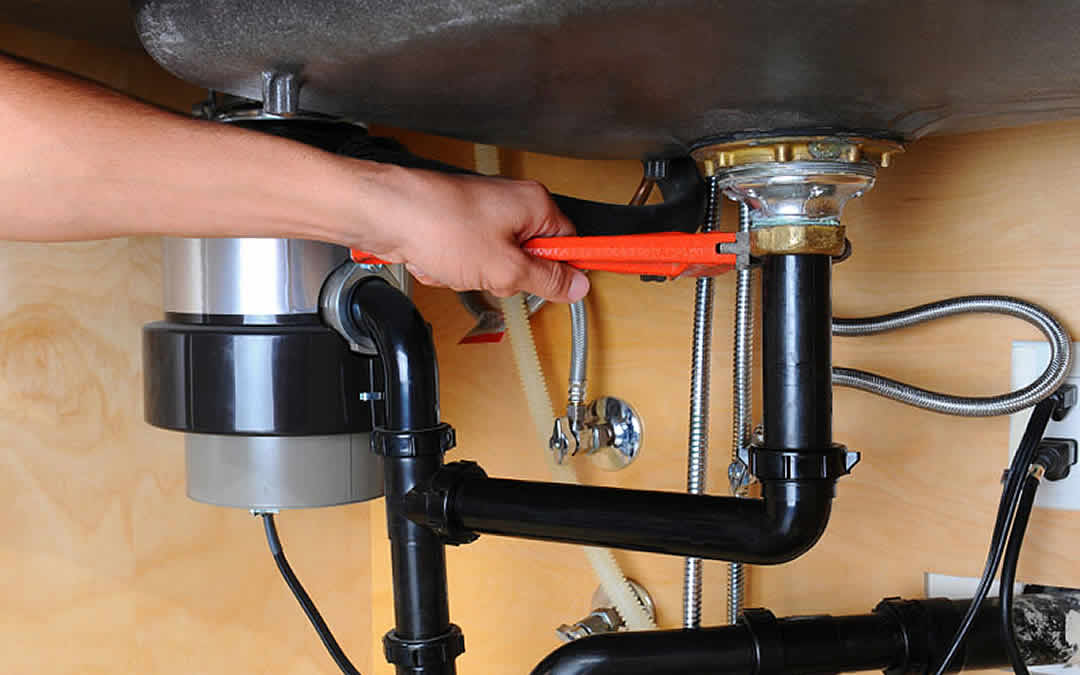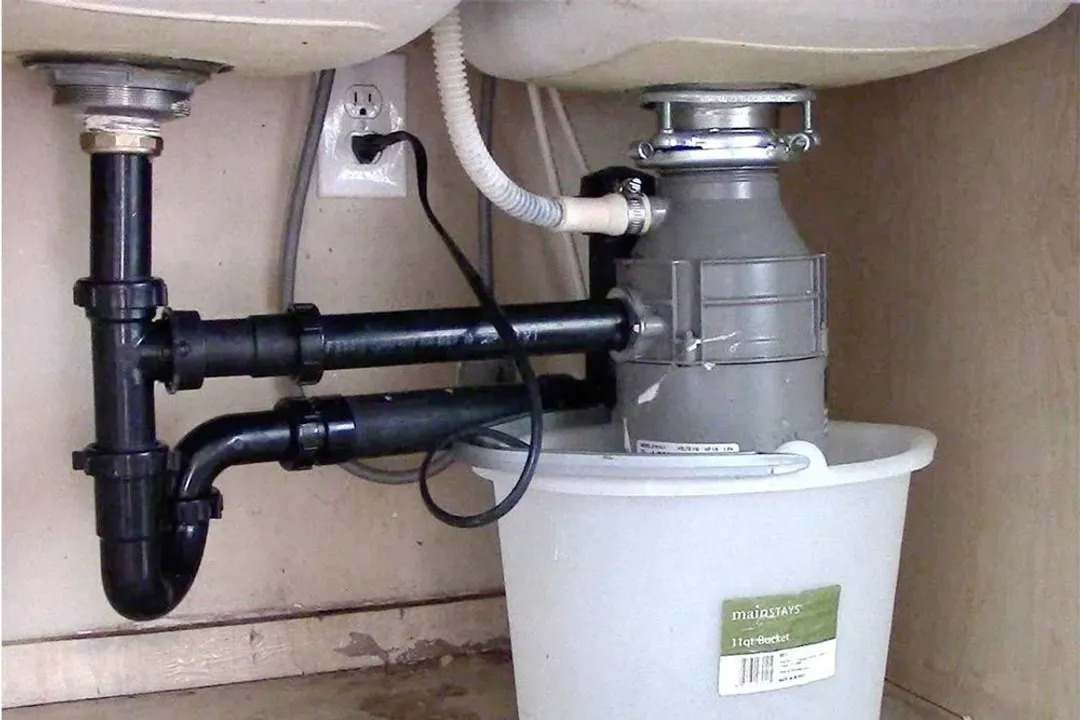Our Guide to Resolving a Leak in Your Garbage Disposal
Our Guide to Resolving a Leak in Your Garbage Disposal
Blog Article
We've discovered the article involving How to fix a pretty consistent leak from my garbage disposal listed below on the net and accepted it made perfect sense to write about it with you here.

Waste disposal unit are necessary kitchen appliances that assist in getting rid of food waste effectively. Nonetheless, a leaking waste disposal unit can be a frustrating and messy trouble to take care of. Luckily, several leakages can be dealt with conveniently with a couple of easy steps. In this article, we will certainly review exactly how to repair a leaking waste disposal unit properly.
Introduction
Garbage disposals are mounted under kitchen area sinks and are developed to shred food waste right into smaller items, enabling it to pass through the pipes system easily. While these gadgets are generally trusted, leaks can take place gradually due to deterioration, loosened links, or damage to the system.
Step-by-Step Overview to Fixing a Leaking Waste Disposal Unit
Switch off the Power
Before trying any repair services, make sure that the power to the waste disposal unit system is turned off to stop the threat of electric shock.
Find the Leak
Identify the specific area of the leak and establish the reason
Tighten up Connections
Use a wrench to tighten any type of loose connections between the disposal system and the pipes system.
Change Seals or Gaskets
If the leak is because of worn seals or gaskets, eliminate the old components and replace them with brand-new ones.
Patching Splits or Openings
For cracks or openings in the disposal device, usage epoxy or an appropriate patching material to seal the broken location.
Recognizing the Source of the Leak
Before attempting to take care of a leaking garbage disposal, it is important to identify the resource of the leakage. This can commonly be done through aesthetic assessment or by performing easy examinations.
Visual Examination
Inspect the garbage disposal system meticulously for any indicators of water leakage. Pay close attention to areas around seals, gaskets, and connection points.
Evaluating for Leaks
One way to evaluate for leaks is by running water through the disposal unit and looking for any kind of visible indicators of leakage.
Typical Sources Of Leakages in Waste Disposals
Worn Seals and Gaskets
Seals and gaskets play a critical function in avoiding water from dripping out of the waste disposal unit. Gradually, these components can wear away, bring about leakages around the disposal unit.
Loose Links
The connections in between the garbage disposal and the pipes system can end up being loosened in time, creating water to leak out throughout operation.
Fractures or Openings in the Disposal System
Physical damages to the garbage disposal, such as fractures or openings in the real estate, can also lead to leakages.
Tools and Materials Needed for Taking Care Of a Dripping Garbage Disposal
Before beginning the fixing procedure, collect the necessary tools and materials, including a screwdriver, adjustable wrench, plumbing technician's putty, substitute seals or gaskets, and epoxy or patching product for fixing fractures or holes.
Evaluating the Garbage Disposal After Repair Work
Once the repair work is complete, test the waste disposal unit by running water via it to make sure that the leak has been resolved.
Preventive Upkeep Tips to Prevent Future Leaks
To stop future leaks, it is essential to execute routine maintenance on your garbage disposal. This includes maintaining it tidy, avoiding placing non-food products or difficult objects down the disposal, and regularly checking for leaks or various other issues.
Conclusion
In conclusion, repairing a dripping waste disposal unit is a relatively simple procedure that can be finished with basic tools and products. By adhering to the steps described in this post and exercising preventative upkeep, you can maintain your waste disposal unit in good working problem and stay clear of costly repairs in the future.
HERE’S HOW TO FIX YOUR GARBAGE DISPOSAL
WHAT TO DO IF SOMETHING IS STUCK IN YOUR GARBAGE DISPOSAL
If the impeller won’t turn, there’s probably something stuck in the disposal. It could be a steak bone or peach pit, although plumbers report pulling all sorts of inappropriate objects out of disposals, such as bottle caps or aluminum foil. Make sure power to the disposal is off, and look inside to see if you can see the source of the jam.
Never stick your fingers in a disposal. Pull out anything you see with tongs or pliers.
If the disposal still won’t work, it may be time to call a plumber or consider buying a new disposal. GEM Plumbing & Heating is here for all of your garbage disposal needs.
WHAT TO DO IF YOUR GARBAGE DISPOSAL DRAIN IS CLOGGED
Take everything out from underneath your sink and put a bucket or other container under your disposal to catch any water that drains out. Disconnect your disposal from the power supply. If it’s plugged into a wall outlet, unplug it. If it’s hardwired into an electrical box, go to the electrical panel and turn off the breaker for the disposal. Pour ¼ cup of baking soda into the drain, followed by ½ cup of white vinegar. Give the solution a few minutes to fizz and do its work. Look into the disposal with a flashlight to see if you can see an object that might be causing the clog. If you see it, remove it using tongs or pliers. MORE TIPS ON DEALING WITH A CLOGGED GARBAGE DISPOSAL
Never use drain cleaner in a garbage disposal. It can damage the plastic parts inside the disposal. You can also be splashed with the caustic liquid while working to clear the clog. Beware! Never stick your fingers into a garbage disposal. Trust us — not a good idea. In many instances, your dishwasher drains through your garbage disposal. This allows the disposal to grind any large food particles that may be drained out of your dishwasher. There are some jurisdictions, however, where the plumbing code prohibits such a connection. WHAT TO DO WHEN YOUR DISHWASHER DRAINS THROUGH THE DISPOSAL
Run some water in the sink so your plunger has at least a ½-inch of water to create a seal and plunge vigorously up and down several times. You may need to repeat this several times. Run hot water down the drain to clear any residue that remains.

As a devoted reader on Why Is , I thought sharing that excerpt was important. Sharing is caring. Helping people is fun. I truly appreciate reading our article about Why Is .
Call Today Report this page